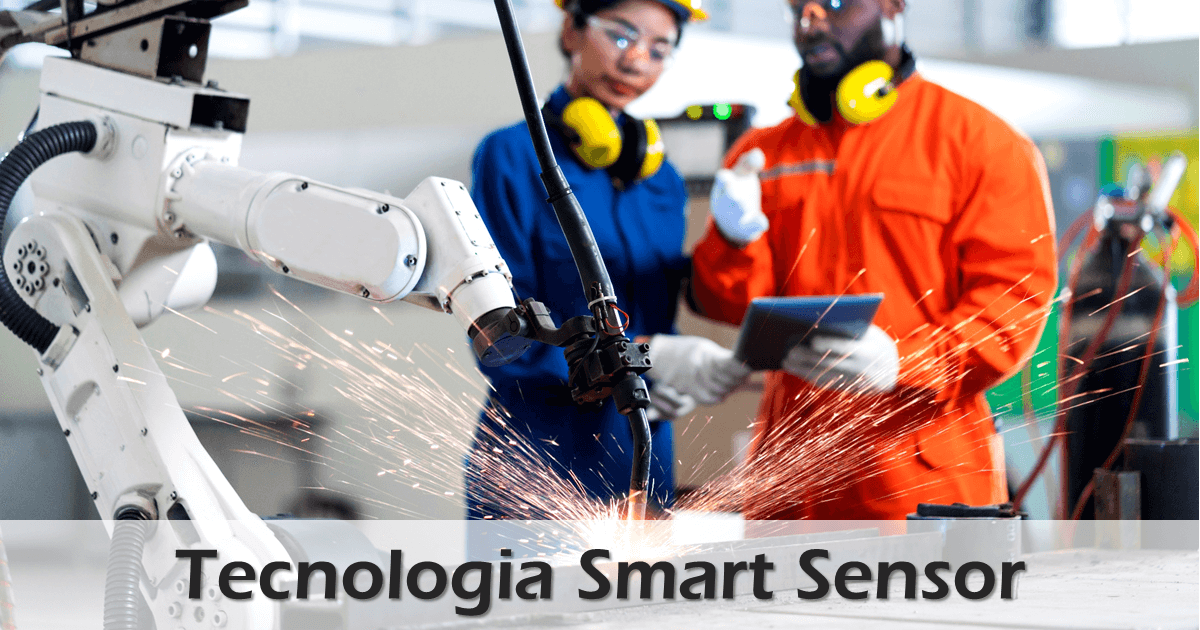Smart sensor growth driver in predictive maintenance
Smart sensors are among the core technologies of Industry 4.0, representing the building blocks for optimising performance, improving plant safety and facilitating preventive and predictive maintenance. Smart sensors represent the future of data acquisition along with other digital and interconnected technologies.
In this paper we will try to understand exactly what they are and what functions they can perform.
A smart sensor technology instrument is a device that is able to process the signals it receives, which may be of various kinds, electrical, physical or chemical, store them and perform various functions on them before sending them in digital format to a further data processing system (either locally or in the cloud).
Just to quickly understand what we are talking about, smart sensors have been applied right from the start inside smartphones and tablets. One example is accelerometers, which enable the measurement of steps taken (thus processing the signal, acceleration, and generating a value in terms of steps taken).
If we are to understand it by its configuration, smart sensor technology consists of a sensor (or transducer), a microprocessor, an amplifier circuit, a communication interface and finally an analogue/digital converter.
With these smart sensors, the IoT, internet of things, has taken off, enabling increased factory automation within companies and production systems with constant monitoring of processes and significant improvements in efficiency.
How can this new technology, smart sensors, be used?
Smart sensors are used heavily as an aid in predictive maintenance alongside the classic measurement systems used in industrial plant engineering. Placed at strategic points, they can detect various anomalies and facilitate the monitoring of plant operating parameters or even detect points of failure of structures or the occurrence of unwanted stresses. The interesting thing about these smart sensors for smart factories is that many of them offer different operating modes to dynamically adapt to the task at hand.

They are usually inserted at critical points in the plant to detect, for example, out-of-range oscillation frequencies.
The cost in itself of individual sensors is not enormous, but one must be careful how many are placed because, as always, one should try to balance the benefits against the cost. In addition to the cost of the equipment itself, one must also consider the cost of management in the acquisition and processing of the data.
In recent times, smart sensor technologies have come out that are not only able to read the data and transmit it, but also to process it locally. Smart sensors, in practice, are capable of analysing process information that is required for a specific control task to be performed in the plant.
Many companies, in order to avoid increasing the costs of an installation (which must then be justified to the customer), tend to limit the use of smart sensors and rely on the data that was already available within the installation and needed for its proper functioning.
The data required for preventive maintenance with smart sensors, which can be obtained from the plant, does not always meet the control needs of predictive maintenance because the mathematical models used need many more parameters to be measured with the new instruments (smart sensors) and not with the old ones.
It is therefore necessary to find the right ‘middle ground’ in order to identify an appropriate and not excessive use of smart sensors.
This large amount of extracted data brings us into the realm of Big Data, which is based on new technologies for interrogating information that result in artificial intelligence to highlight possible future events of breakdowns or malfunctions: proper maintenance with efficient diagnostics avoids unexpected downtimes and allows us to plan interventions accurately, thus considerably reducing costs.
In summary, we can say that the new technologies (smart sensors) are an indispensable aid for Industry 4.0; without them, the old way of detecting information would not have been able to provide the ‘refined’ amount of data that leads to efficient analysis and predictive identification of problems, thus simplifying production planning and machinery maintenance.
